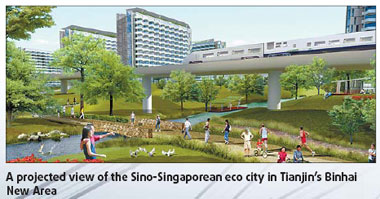 Who would have thought green roofs would work in a desert? Well, designer Llewelyn Davies Yeang did! Eco Bay Complex in Abu Dhabi, United Arab Emirates, is a multi-story, multi-family, residential complex.
Who would have thought green roofs would work in a desert? Well, designer Llewelyn Davies Yeang did! Eco Bay Complex in Abu Dhabi, United Arab Emirates, is a multi-story, multi-family, residential complex.World Arab reports the following:
"This oasis is conceived as a network of passively-cooled gardens and public spaces beginning with a large plaza at ground level, which then winds its way up to the sky as a series of pocket gardens floating within each of the five towers."
Why are green roofs a plus for desert environments? Although storm water runoff management is a key feature of green roofs, desert environments tend to suffer from high concentrations of fine particulate matter air pollution, specifically sand. Additionally, as the Gulf states increase their industrial production, they also increase their CO2 emissions.
The other complimentary feature of this type of building with both green roofs and internal gardens provide cooling through the volume of plant life. What isn't discussed is where the necessary water will come. One hopes a gray water system will be put in place to reduce fresh water consumption.


